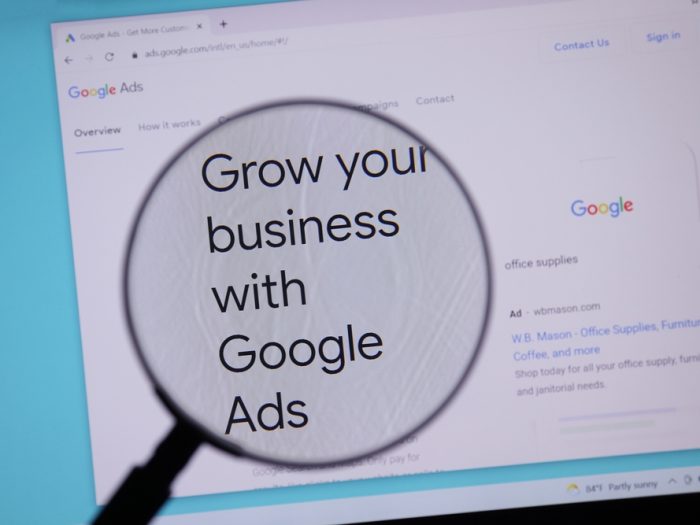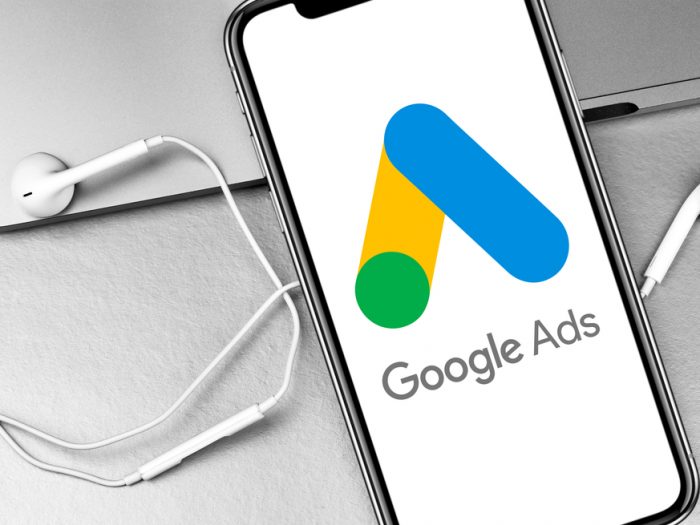In the ever-evolving digital landscape, online advertising plays a vital role in driving business growth. Among the myriad advertising platforms available, Google Ads stands out as a powerful tool for reaching potential customers.
However, to truly harness its potential, businesses must follow best practices to maximize their return on investment (ROI). In this blog post, we will explore eight essential Google Ads best practices that will help you create effective campaigns, increase click-through rates, and ultimately boost conversions.

1. Set Clear Advertising Goals
Before diving into Google Ads, it is crucial to define clear advertising goals. Are you aiming to increase brand awareness, generate leads, or drive direct sales? Establishing specific, measurable, attainable, relevant, and time-bound (SMART) objectives will guide your campaign strategy and ensure you effectively allocate your budget and resources.
Figure out what your adverting objective is:
- to Increase brand awareness?
- Boost your brands’ engagement?
- Start ranking higher on search results?
- Increase your website traffic?
- Generate more qualified leads?
- Simply Increase revenue?
Clearly defining your advertising objective is crucial for maximizing the effectiveness of your Google ad campaigns. Without a well-defined objective, your efforts may lack focus and fail to generate the desired results. By clearly understanding what you aim to achieve through your advertising, whether it’s increasing brand awareness, driving website traffic, or boosting conversions, you can tailor your Google ad campaigns accordingly. This allows you to optimize your ad placements, targeting, messaging, and budget allocation to align with your specific objective.
2.Conduct Thorough Keyword Research
Keywords are the foundational part of Google Ads’ best practices. Through keyword research, you can identify the most relevant and high-performing search terms your target audience is using. Use tools like Google’s Keyword Planner or third-party platforms to identify keywords with high search volume, low competition, and strong commercial intent. Incorporate a mix of broad match, phrase match, and exact match keywords to ensure comprehensive coverage and maximize your reach.
In summary, keywords are crucial in Google Ads’ best practices. Conduct thorough research to find relevant, high-performing search terms. Include a solid mix for comprehensive coverage and maximum reach.
3. Craft Compelling Google Ad Copy
Creating attention-grabbing and compelling ad copy is essential to stand out from the competition. Highlight unique selling points, benefits, and compelling offers to entice users to click on your ads. Ensure that your copy aligns with the corresponding landing page to provide a cohesive and seamless user experience. Experiment with different ad formats, such as expanded text ads or responsive search ads, to determine which performs best for your specific goals.
To triumph over the competition you must follow Google Ads’ best practices, start by crafting captivating ad copy. Emphasize unique selling points, benefits, and compelling offers to entice clicks. Align your copy with the landing page for a seamless user experience. Be sure to experiment with different ad formats and determine what works best for your goals.
4. Implement Google Ad Extensions
Ad extensions enhance your ads by providing additional information and encouraging engagement. Utilize extensions like call extensions, site link extensions, and structured snippet extensions to improve ad visibility and provide users with more opportunities to interact with your brand. Ad extensions not only increase your ad’s relevance and click-through rate but also improve the overall quality score, resulting in lower costs per click and higher ad rankings.
Here are several options you can use depending on your goals and marketing objectives:
- Sitelinks
- Callout extensions
- Structured snippets
- extensions
- Lead form extensions
- Location extensions
- Affiliate location extensions
- Price extensions
5. Optimize Landing Pages
Your ad may attract clicks, but with optimized landing pages, those clicks will translate into conversions. Ensure that your landing pages are relevant, user-friendly, and optimized for conversions. Align the messaging, visuals, and call-to-action (CTA) on the landing page with the ad copy to provide a consistent experience. Optimize page load times, streamline the conversion process, and incorporate persuasive elements such as customer testimonials or trust signals to boost user confidence and encourage conversions.
Keep them relevant, user-friendly, and conversion-driven. For example, by incorporating a prominent and visually appealing CTA button on your landing page, such as “Get Your Free Trial Now,” visitors are more likely to be enticed to take immediate action and sign up for your product or service. Optimizing your landing page with CTAs is a crucial part of implementing google ads b best practices.
6. Utilize Conversion Tracking & Analytics
Implementing conversion tracking and leveraging analytics is crucial to measure the effectiveness of your Google Ads campaigns. Set up conversion tracking to monitor key actions, such as form submissions, purchases, or newsletter sign-ups, and attribute them back to specific ads or keywords.
Analyze campaign data regularly, identify trends, and make data-driven optimizations to improve campaign performance. Track key metrics like click-through rate (CTR), conversion rate (CVR), and return on ad spend (ROAS) to gain valuable insights and refine your strategies.

7. Conduct A/B Testing
Continuous testing is fundamental to refining your Google Ads campaigns and following the best practices. Experiment with different ad variations, landing page layouts, calls-to-action, or targeting options to identify the most effective combinations.
For example, testing different ad headlines can help you identify which headline resonates best with your audience, leading to higher click-through rates and improved campaign effectiveness. A/B Testing is one way to ensure you are launching a campaign with Google ads best practices in mind.
Split testing enables you to make informed decisions based on actual performance data rather than assumptions. Test one variable at a time, and give each test enough time to gather statistically significant results. By regularly optimizing and fine-tuning your campaigns, you can uncover hidden opportunities for improved performance and ROI.
8. Monitor & Refine Regularly
Successful Google Ads campaigns require ongoing monitoring and refinement. Keep a close eye on campaign performance, ad placements, search terms, and competitors. Regularly review and adjust bids, budgets, and targeting settings to maximize your results. Leverage automated bidding strategies or Smart campaigns to save time and enhance performance. Stay informed about industry trends, platform updates, and new features to ensure you stay ahead of the competition. Remember, continuous improvement is the key to long-term success with Google Ads.
Our Final Thoughts
By implementing these Google Ads best practices, you can unlock the true potential of Google Ads and achieve your advertising goals. Remember, strategic planning, meticulous execution, and data-driven optimisations are the pillars of successful campaigns. Embrace these best practices, stay agile, and continuously refine your strategies to drive meaningful results and grow your business through Google Ads best practices.
Unleash the power of Google Ads with Finsbury Media, your trusted Google Ads agency. Our experts will optimize your digital advertising strategy, targeting your audience effectively and generating high-quality leads. With tailored campaigns, keyword optimization, and conversion tracking, we’ll maximize your ROI. Don’t wait – take action now and unlock the full potential of Google Ads for your business with Finsbury Media.




